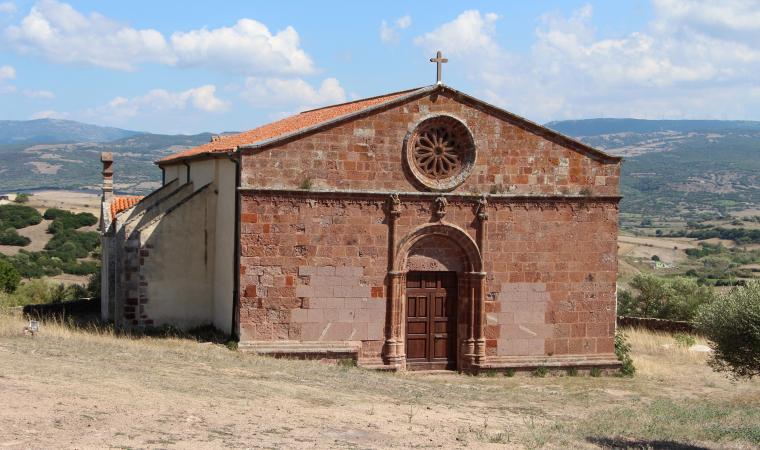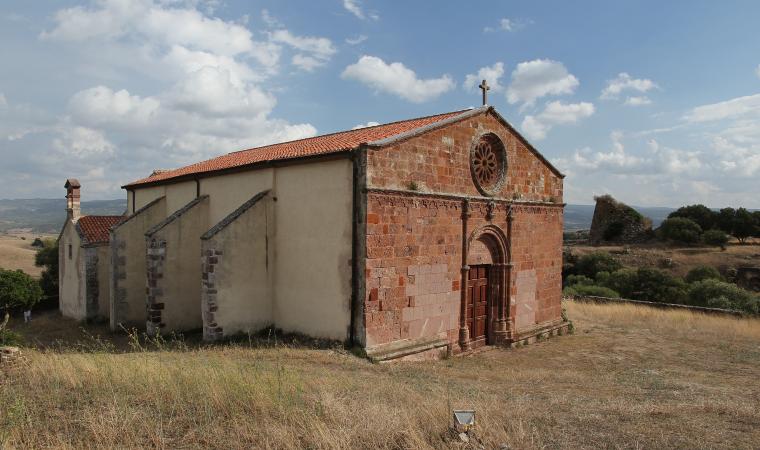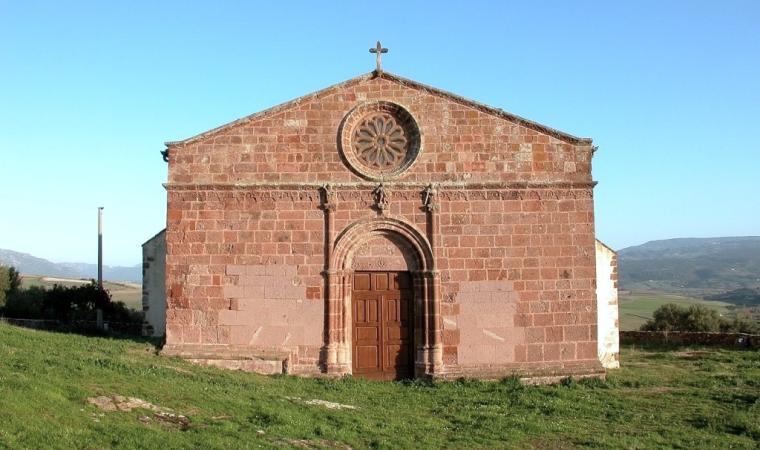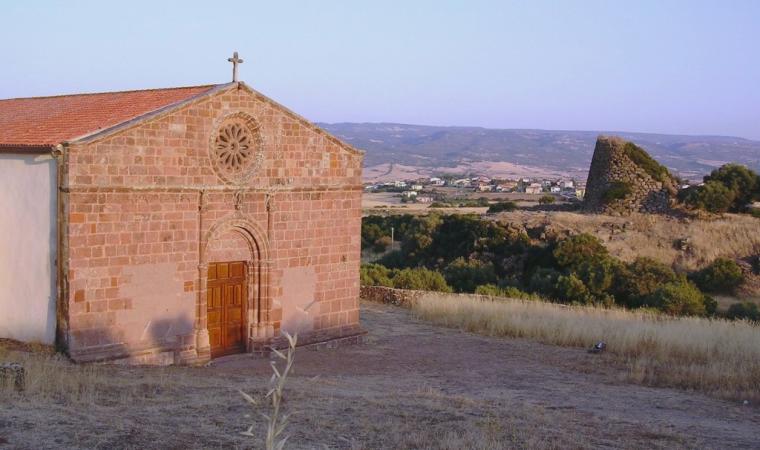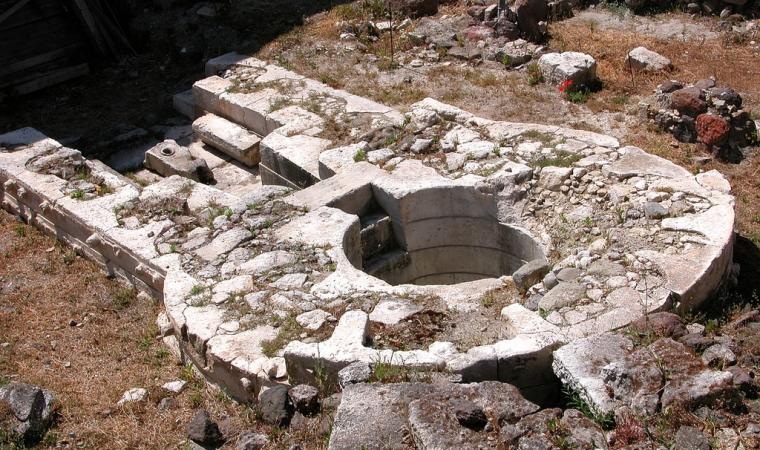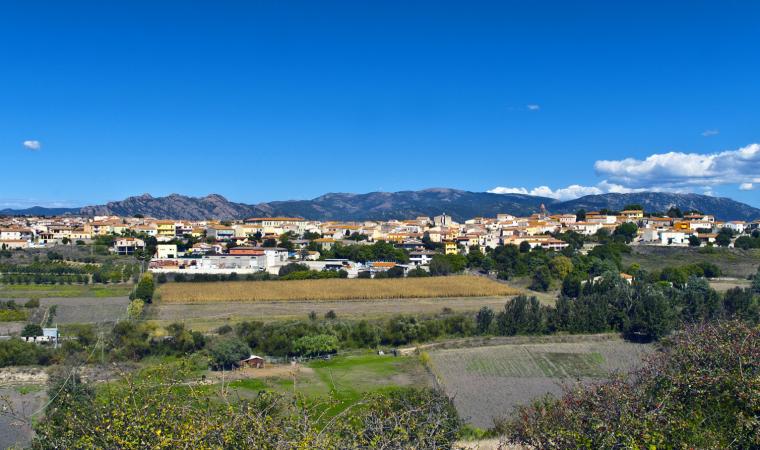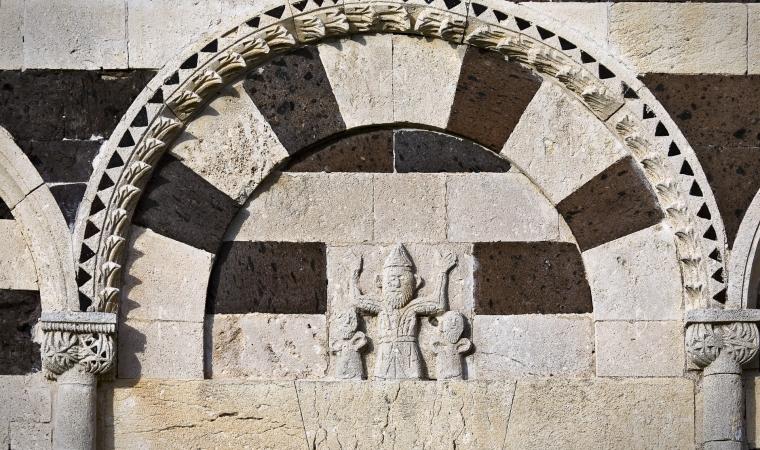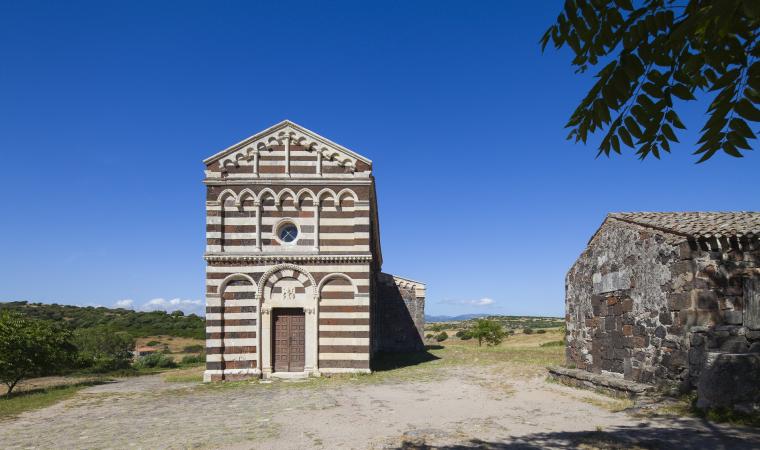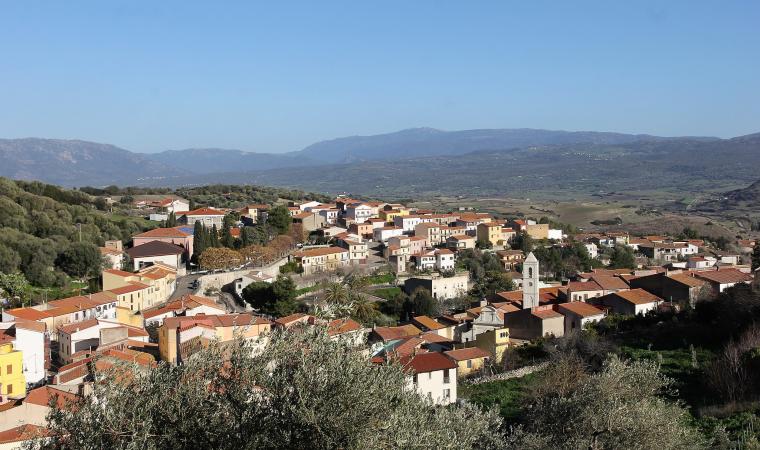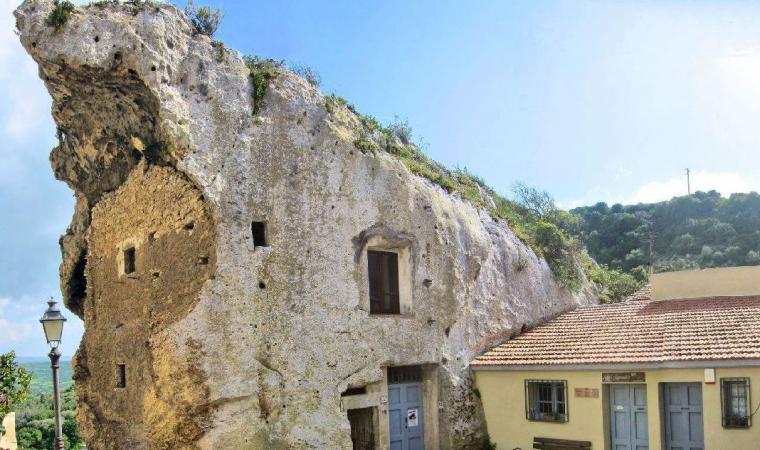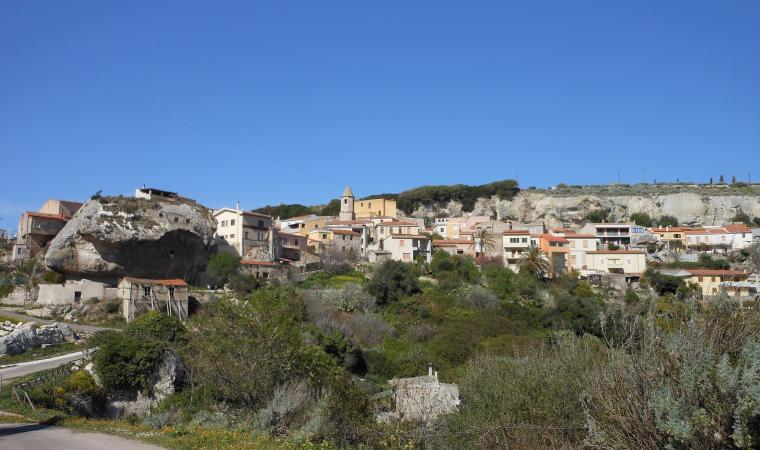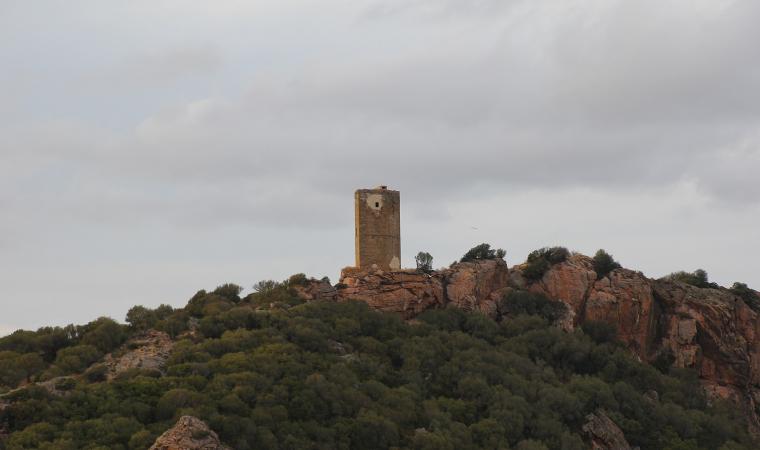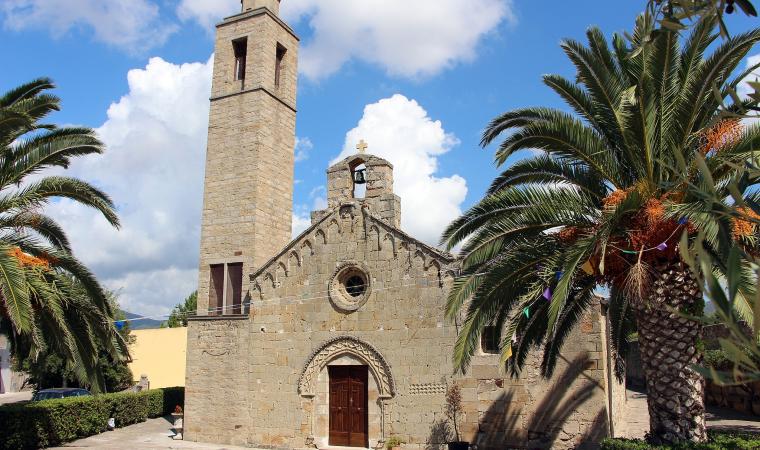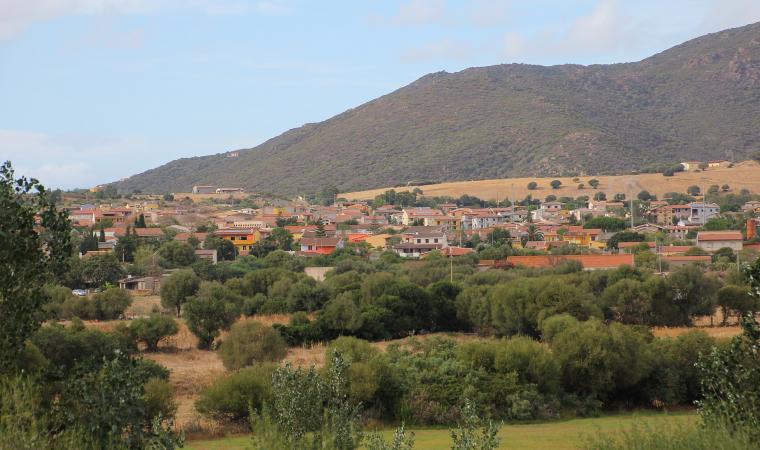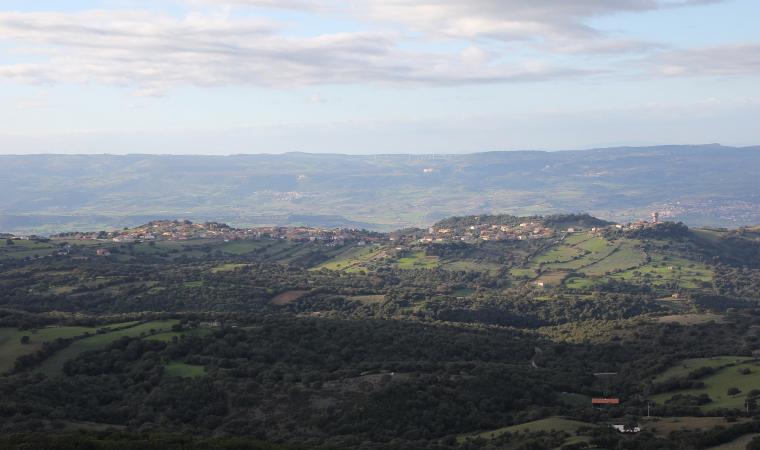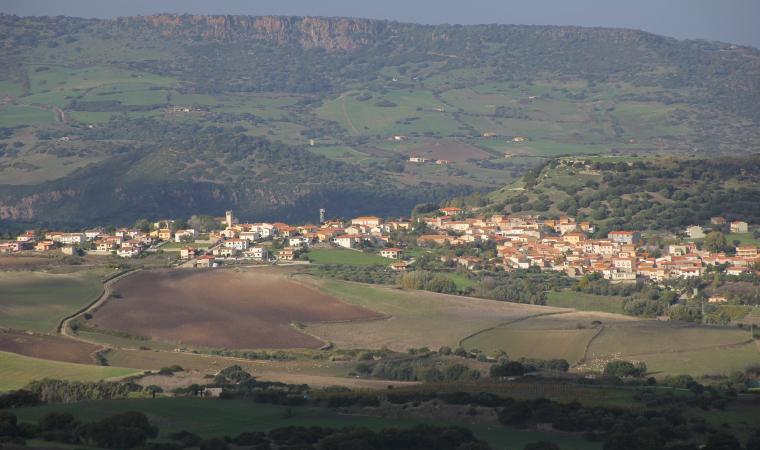It owes its fame to the fact that, for a long time, it was the stage of legends and the custodian of one of the most famous works of religious art in Sardinia, the Retable of Saint George, among the largest wooden altarpieces on the Island. However, it also continues to preserve another unique element: on the façade, above the portal, there is a sculpted figurine depicting the legendary scene of the saint, to whom the church is dedicated, with the dragon. The Church of San Giorgio, dedicated to the patron saint and martyr of Barcelona, is located a kilometre and a half from Perfugas in an area dotted with archaeological evidence, one element of which is a very short distance from the sanctuary: a single-tower nuraghe, also called San Giorgio.
The origin of the church is known thanks to an inscription found on a beam in the roof during restoration work, indicating the year 1528. The construction therefore dates back to the 16th century, which can in any case be assumed, thanks to the clear Gothic-Catalan characteristics of the façade and the decorative elements.
On the façade, you can admire the red trachyte ashlars, a large portal and - in line - a rose window, placed above a string course, under which there is a series of trefoil arches. There is another cornice, which is rounded, over the portal. Above it, resting on small columns, are three sculptures: Saints Peter and Paul on the sides and Saint George and the dragon in the centre. The walls are plastered, while the roofing has wooden beams with a shingled, pitched roof.
Inside, there is a single-nave layout, while the vault has Gothic arches set on corbels, sculpted with floral and anthropomorphic elements. Two altars, dedicated to Santa Margherita and San Pancrazio, stand out on the sides of the presbytery, while in the centre there is an enlarged image of the Retable. The original work, by an anonymous artist known as the Maestro of Perfugas, is located in the Diocesan Museum of Sacred Art set up in a chapel of the Parish Church of Santa Maria degli Angeli.
Captivating stories are linked to the church: it was thought to belong to a medieval village called ‘Leda’, which no longer exists, because of the ancient name of San Giorgio de Ledda, but in reality the name reflects that of the patron saint of Catalonia, Sant Jordi de Lydda. In the 17th century, the sanctuary was apparently frequented by crowds of worshippers, attracted by alleged miracles and exorcisms that took place there. The celebration of Santu Jolzi, on 23 April, was certainly one of the most highly frequented in Anglona until the 20th century. Not long ago, the people of Perfugas revived the tradition, with a procession led by horsemen carrying sacred banners.



